- Mumbai Central & Mira Road
- +(91) 98333 44 333
- sales@globalteckz.com
How to Improve Purchase Planning for Business
- Home
- How to Improve Purchase Planning for Business

Globalteckz is one of the leading Odoo integrators and ERP service providers in India, offering expert solutions in Odoo, ERPNext, and business automation for startups and enterprises. With a skilled team, we deliver customized ERP implementation, integration, and support services to streamline operations and drive digital transformation across India, UAE, USA, Canada, and the UK.
Let’s Meet Together
Mumbai Central Location: Office No. 43, Ali Mansion, Near Post Office, Belasis Road, Mumbai Central East, Mumbai– 400008.
Mira Road Location: Unit 002, Building A7, Sector 5, Mira Road (East), Thane, Mumbai – 401107.
Call/WhatsApp:
+(91) 9833344333
+(91) 9773530597
Email: sales@globalteckz.com
Teams/Skype
kadriazhar | abraar.patel
Copyright © 2025 | Globalteckz - (India & USA). All rights reserved. | Terms and Conditions





How to Improve Purchase Planning for Business
Effective purchase planning is essential for any business aiming to reduce costs, avoid stockouts, and ensure seamless operations. Whether you’re managing a small retail store or overseeing a large manufacturing unit, the right procurement strategy can streamline your procurement process and boost overall efficiency.
In this post, we’ll understand actionable steps to improve purchase planning for your business, keeping in mind the latest SEO practices like EEAT (Expertise, Authoritativeness, Trustworthiness) to provide accurate and reliable knowledge.
Why Purchase Planning Is Important
Purchase planning directly affects your inventory levels, operational efficiency, and overall profitability. Poor planning can lead to:
● Overstocking, which increases storage costs.
● Stockouts, resulting in customer dissatisfaction and lost sales.
● Supplier conflicts and delayed deliveries.
An effective procurement plan allows you to align your procurement process with your business goals, optimize inventory, and maintain good relationships with suppliers.
Steps to Improve Purchase Planning
1. Analyze Historical Data
Historical data provides insights into:
● Past purchasing trends.
● Seasonal demand fluctuations.
● Supplier reliability.
How to use historical data effectively:
● Use inventory management tools to identify fast-moving and slow-moving products.
● Analyze purchasing frequency and lead times.
● Forecast future needs based on past trends.
2. Adopt Inventory Management Tools
Modern inventory management systems, like Odoo, QuickBooks, or Zoho Inventory, can automate key processes and improve accuracy.
Benefits of inventory management tools:
● Real-time stock updates.
● Alerts for low stock levels.
● Better tracking of inventory turnover rates.
Pro Tip: Choose software that integrates seamlessly with your ERP system for end-to-end process optimization.
3. Build Strong Supplier Relationships
Suppliers play a critical role in ensuring timely delivery and quality products. Here’s how you can strengthen supplier partnerships:
● Communicate Clearly: Share your purchase plan and order forecasts.
● Negotiate Better Terms: Discuss volume discounts and flexible payment terms.
● Evaluate Performance: Regularly review supplier delivery timelines and product quality.
Building trust with reliable suppliers can reduce lead times and improve your overall procurement process.
4. Implement Reorder Point and Safety Stock Levels
Reorder points and safety stock levels ensure you never run out of essential items.
Steps to calculate reorder points:
1. Identify average daily usage.
2. Multiply by lead time.
3. Add safety stock to account for unforeseen delays.
Example: If you use 50 units daily, the lead time is 10 days, and you want a safety stock of 100 units: Reorder Point = (50 × 10) + 100 = 600 units.
5. Forecast Demand Accurately
Accurate demand forecasting prevents overstocking and stockouts.
Techniques for demand forecasting:
● Qualitative Forecasting: Use expert judgment and market research for new products.
● Quantitative Forecasting: Leverage historical sales data and predictive analytics.
● Seasonal Forecasting: Plan for peak seasons based on past trends.
Tools to consider: Google Trends, ERP software, and sales analytics tools.
6. Optimize Procurement Processes
Streamlining procurement ensures efficient purchase planning.
Key strategies:
● Automate PO using procurement software.
● Centralize supplier communication.
● Regularly update your preferred supplier list.
Pro Tip: Monitor procurement KPIs like cost per order and supplier lead time to measure efficiency.
Common Challenges in Purchase Planning
Even with the best strategies, challenges can arise. Here are some common ones and how to address them:
1. Unreliable Suppliers:
○ Maintain backup suppliers.
○ Set performance benchmarks.
2. Sudden Demand Spikes:
○ Use safety stock to handle unexpected orders.
○ Collaborate with suppliers for quick restocking.
3. Limited Visibility:
○ Use integrated systems to ensure transparency across all departments.
Benefits of Effective Purchase Planning
Implementing these strategies can lead to:
● Reduced Costs: Avoid overstocking and minimize storage expenses.
● Improved Cash Flow: Spend wisely and allocate resources efficiently.
● Enhanced Customer Satisfaction: Ensure timely order fulfillment.
● Streamlined Operations: Eliminate manual errors and optimize workflows.
Conclusion
Improving purchase planning for your business is not just about buying smarter—it’s about aligning your procurement processes with your overall business strategy. By leveraging historical data, adopting inventory tools, building strong supplier relationships, and forecasting demand accurately, you can ensure your business operates smoothly and efficiently.
Start implementing these strategies today to see measurable improvements in your procurement process. With the right tools and practices, you’ll not only save costs but also build a more resilient and competitive business.
Read more Articles